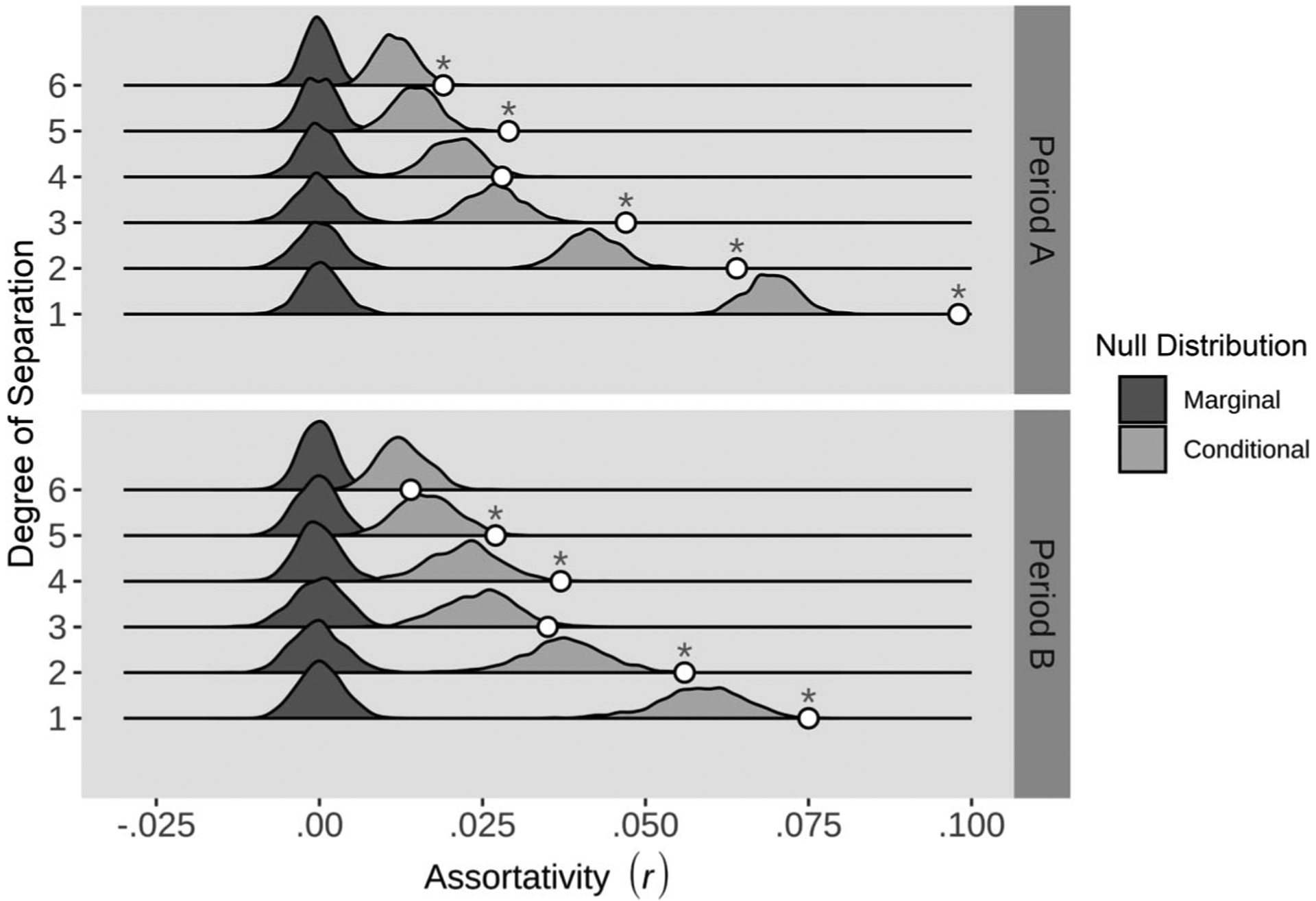Figure 4.

Observed assortativity (r) up to six degrees of separation and across two periods. Each white circle represents an assortativity estimate (horizontal axis) for the network at a given degree of separation (vertical axis). The bootstrapped null distributions for both marginal suicide-related verbalization (SRV) assortativity (dark) and conditional SRV assortativity (light) are also provided as benchmarks for evaluating the statistical significance of those sample assortativity estimates. Consistent with traditional hypothesis testing, a sample assortativity estimate is significant when it occupies a low density (low probability) region of its null distribution. In this case, all observed assortativity estimates are significantly different than the marginal null (completely random SRVs). Asterisks (*) denote which observed assortativity values are also significantly different from the conditional null (i.e., they are not simply an artifact of mood at a given degree of separation). Note that because marginal null distributions are completely random, they will always center around zero assortativity; however, because the conditional null distributions account for the assortativity in sadness (which is known to decline as a function of social distance), these distributions will center at difference values. Specifically, they will be centered on the most plausible SRV assortativity value one would expect, knowing the sadness scores of everyone in the network.
